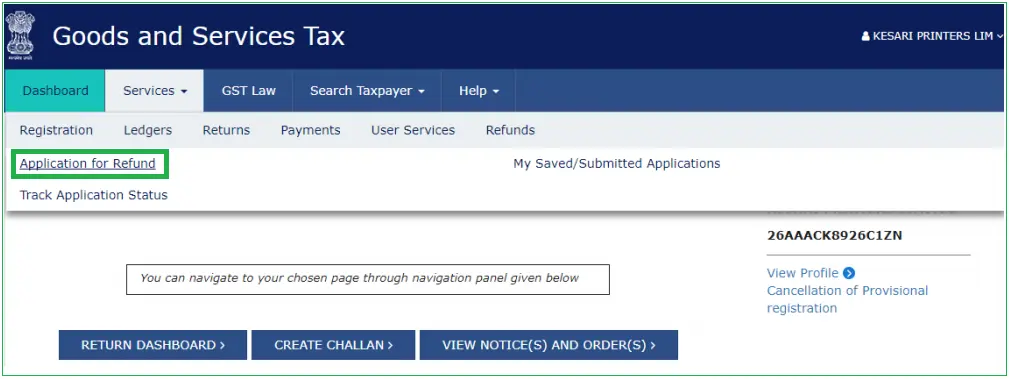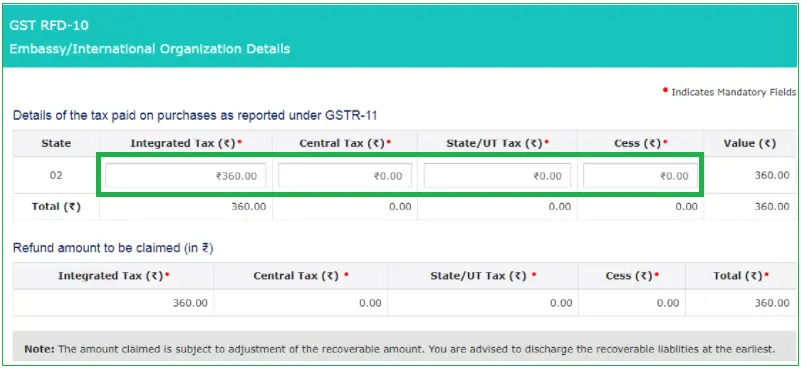The taxpayer must go through a protracted process and provide the GST authorities with the required documentation and declarations in order to receive a claim GST refund.Read this blog to learn more about how to claim a GST refund.
Goods and Services Tax (GST) refunds are essential for taxpayers to recover excess GST payments. A refund process ensures taxpayers reclaim their rightful dues, whether they have deposited excessive cash in the electronic cash ledger, paid tax by mistake, or accumulated input tax credits (ITCs) due to zero-rated sales or an inverted tax structure.
The refund application process depends on the type of refund being claimed. For example, IGST refunds on exports are claimed by filing details in GSTR-1 and GSTR-3B forms, while refunds for excess cash in the ledger are obtained through Form RFD-01. Accordingly, the procedure and forms vary based on the type of GST refund sought.
In this article, we provide a complete guide showing how to file different types of GST refunds in a way that ensures taxpayers understand their rights and follow the correct procedure.
Steps to Submit a GST Refund Pre-Application Form
To streamline the refund process under GST, taxpayers must first file a refund pre-application form, which provides vital business details. This form captures information such as the nature of the business, Aadhaar number, income tax records, export data, and other essential financial details. It is mandatory for all GST refund types. It must be submitted carefully, as it cannot be edited once filed.
Here are the two key steps involved in submitting the GST refund pre-application form:
Step 1: Access the GST Portal: Log in to your GST account, navigate to the ‘Services‘ tab, click ‘Refunds,’ and select the ‘Refund pre-application form’ option.
Step 2: Complete and Submit the Form: Fill in all required fields on the pre-application form page, including business details and income data. After completing the form, click ‘Submit.’ A confirmation message will be displayed, indicating successful submission.
The following details are required in the pre-application form:
- Business Category: Choose manufacturer, merchant exporter, trader, or service provider.
- IEC Issue Date (for exporters): Exporters must provide the date of issue for the Import Export Certificate when applying for export-related refunds.
- Aadhaar Information: Enter the Aadhaar number of the primary authorised signatory.
- Export Value: Report the value of exports made during FY 2019-2020 (for exporters) at the GSTIN level.
- Income Tax and Advance Tax Payments: Provide details of income tax paid during FY 2018-2019 and advance tax paid in FY 2019-2020.
- Capital Expenditure: Include information on capital expenditure and investments made during FY 2018-2019.
Refund Process for IGST Paid on Export of Goods (With Tax Payment)
Exports under GST are treated as zero-rated supplies, meaning exporters can claim a refund on the IGST (Integrated Goods and Services Tax) and cess paid at the time of export. No separate application through Form RFD-01 is required for such refunds, simplifying the process for exporters.
Here’s the process to claim an IGST refund on the export of goods:
- Filing in GSTR-1 and GSTR-3B: Exporters must ensure that the shipping bill details are filled in Table 6A of GSTR-1 and that the corresponding summary of tax payment is reported in item 3.1(b) of GSTR-3B. Both returns should be filed by their due dates as prescribed by GST law.
- Accurate Shipping Details: Export invoice data in Table 6A of GSTR-1 should include the complete Shipping Bill number, date, and port code. These details must align with the corresponding tax period for which they are filed in GSTR-1 and GSTR-3B.
- GST-ICEGATE Integration: The GST system treats the shipping bill as an application for a refund. Export details from GSTR-1 are shared with the Indian Customs Electronic Gateway (ICEGATE) system. The refund process begins once the matching is done with the Export General Manifest (EGM).
- Confirmation and Payment: Upon validation, the refund payment is processed by ICEGATE and credited to the taxpayer’s account. The GST portal will confirm this transaction via SMS and email.
Exporters must ensure that the IGST and cess amounts reported in Table 3.1 of GSTR-3B equal or exceed the amounts in Tables 6A and 6B of GSTR-1 to avoid mismatches that may delay the refund.
Steps to Apply for GST Refunds Using Form RFD-01
Taxpayers seeking a refund under GST for specific cases must submit Form RFD-01. This form is essential for claiming refunds across various scenarios, such as excess tax payments, unutilised Input Tax Credit (ITC), and refunds related to SEZ or deemed exports. Here are the types of GST refund claims where filing Form RFD-01 is necessary:
- Excess Cash Balance: Claiming refunds on excess cash deposited in the electronic cash ledger or overpaid taxes.
- IGST Paid on Export of Services: For cases where Integrated Goods and Services Tax (IGST) was paid on services exported with tax payment.
- Accumulated ITC on Exports (Without Payment of Tax): Refunds on unutilised ITC resulting from zero-rated exports of goods or services.
- Accumulated ITC on SEZ Supplies (Without Payment of Tax): Refunds on unutilised ITC for supplies made to SEZ units or SEZ developers.
- Inverted Tax Structure: ITC accumulated due to higher tax rates on inputs than outputs, allowing businesses to claim refunds on unused credit.
- Deemed Exports: Claiming refunds for deemed exports where the supplier paid tax but did not collect it from the buyer.
- Tax Paid on SEZ Supplies (With Payment of Tax): Refunds for tax paid on supplies made to SEZ units or developers, where the tax was paid.
- Tax Adjustments for Supply Classifications: Refunds for cases where tax was paid on supplies initially classified as intrastate but later deemed interstate, or vice versa.
- Refunds on Assessments or Appeals: Refund claims arising from assessments, provisional assessments, appeals, or other legal orders.
- Refunds on Any Other Ground: Miscellaneous refund claims not covered by the above categories.
Refund Claims by Unregistered Taxpayers: Unregistered taxpayers can also claim refunds under specific conditions using Form RFD-01.
Filing Accurate Information
Taxpayers must ensure that the details declared in GSTR-1 and RFD-01 are accurate and complete. Incorrect or incomplete information may delay or deny the refund claim. Additionally, for certain types of refunds, a certificate from a chartered or cost accountant must be submitted to validate the claim.
By following these steps and ensuring accurate filings, taxpayers can successfully claim their GST refunds using Form RFD-01.
Steps to File a Refund Application in Form RFD-01
To successfully file a refund application under GST, taxpayers must follow the steps outlined below using Form RFD-01:
Step 1: Log in to the GST Portal – Begin by logging into the GST portal using your credentials. Once logged in, navigate to the ‘Services’ tab, click ‘Refunds‘ and select ‘Application for Refund‘.
Step 2: Select the Refund Type – On the next page, select the appropriate reason for the refund or the specific type you are applying for. Once the reason is selected, click ‘Create Refund Application‘ to proceed.
Step 3: Choose the Refund Period – You will now be prompted to choose the period for which the refund is claimed. You will also be asked if you wish to file a nil refund. Select ‘Yes‘ or ‘No‘ accordingly.
- If filing a nil refund, tick the declaration box and submit the application using either a Digital Signature Certificate (DSC) or Electronic Verification Code (EVC).
- This step is not required for refund types such as excess cash balance in the ledger, refunds for intrastate supplies later categorized as interstate (or vice versa), or refunds arising from assessments, appeals, provisional assessments, or orders.
Step 4: Enter Refund-Specific Details – Based on the refund type selected, a relevant page will be displayed where you must provide the necessary details, such as invoice numbers, tax amounts, and supporting documents. Ensure that all information is accurate and complete before submitting the form.
By following these steps, taxpayers can efficiently submit their refund applications under GST using Form RFD-01. It is essential to ensure accuracy and thoroughness to avoid delays or complications in the refund process.
Types of GST Refunds and Filing Details
Type 1: Excess Cash Balance in the Electronic Cash Ledger
Enter the refund amount corresponding to the excess balance held in the electronic cash ledger.
Type 2: Excess Tax Paid through GSTR-3B
Provide the details of the GSTR-3B return in which the excess tax was paid using cash.
Type 3: Accumulated ITC Due to Exports Without Payment of Tax
- Step a: Download Statement 3 and enter the details of the export invoices for which the refund is claimed.
- Step b: Generate and upload the JSON file on the GST portal. Validate any errors.
- Step c: Enter values such as aggregate turnover, adjusted total turnover, and net input tax credit in the Computation of Refund Statement (3A).
- Step d: The system will validate and compute the maximum refund amount eligible for the taxpayer.
Type 4: Accumulated ITC Due to Supplies to SEZ Units/Developers (Without Payment of Tax)
The procedure is similar to Type 3 but requires Statement 5 to be uploaded. You can upload a CSV file instead of a JSON file.

Type 5: ITC Accumulated Due to Inverted Tax Structure
Follow the steps outlined for Type 3 using Statement 1A. Enter turnover, tax payable, adjusted total turnover, and net ITC.

Type 6: Refund by the Recipient of Deemed Exports
If the recipient of deemed exports paid taxes and claimed ITC, they may apply for a refund. Follow the steps in Type 3 using Statement 5B.

Type 7: Tax Paid on Supplies to SEZ Units/Developers (With Payment of Tax)
The same process as Type 3 applies, using Statement 4. The refund amount will be auto-populated based on the statement uploaded.

Type 8: Tax Paid on Intrastate Supply Later Classified as Interstate (or Vice Versa)
Use the same process as Type 3 but with Statement 6. The refund amount will be auto-calculated.

Type 9: Refund by the Supplier of Deemed Exports
Follow the same procedure as Type 3, using Statement 5B. The refund amount will be auto-populated.

Type 10: Refund of IGST Paid on Export of Services (With Tax Payment)
The process remains the same as Type 3, using Statement 2. The refund amount will be auto-calculated based on the information provided.

Type 11: Refunds Due to Assessments, Provisional Assessments, or Appeals
Choose the type of assessment or appeal and provide the relevant details.

Type 12: Refunds on ‘Any Other Ground’
For cases such as excess interest paid via GSTR-3B, specify the reason for the refund in 200 characters and provide the refund amount.

Step 5: Enter Bank Details and Upload Documents – Provide your bank account details, upload necessary supporting documents (up to 10 files, with a maximum size of 5 MB each), and complete the declaration. Preview your application and click ‘Save’. The saved application will remain available for 15 days.

Step 6: File the Application – File your refund application using DSC or EVC. Once submitted, an Application Reference Number (ARN) will be generated and displayed. You will also receive the ARN via email and SMS.

Post-Submission: What Happens Next?
After submitting your application, it is assigned to a refund processing officer. The refund status will be updated periodically, and taxpayers can track the progress using their ARN.

Refund Claim by Unregistered Person
Unregistered persons who wish to claim a GST refund must first obtain new GST registration. Once registered, they can apply for the refund by filing Form RFD-01. For this, they must submit Statement 8, a supplier certificate, and relevant supporting documents.

GST Refund Process for Embassies and International Organisations
Embassies and international organisations can claim GST refunds using one of two methods:
Method 1: Using GSTR-11 to Generate RFD-10
Generate the Application: Log into the GST portal and select the relevant tax period or quarter in GSTR-11. Click on the ‘Generate RFD-10’ button to proceed.

Select the Entity: Choose the ‘Embassy/Organisation’ radio button, then click ‘Create’. The table titled ‘Details of the Tax Paid on Purchases as Reported Under GSTR-11’ will auto-populate with amounts from the filed return, which can be edited if necessary.

Submit the Refund Application: Preview the information, then submit the application using DSC or EVC.

Method 2: Using the GST Portal Dashboard
- Access Refund Application: After logging into the GST portal, navigate to the ‘Services’ tab, then select ‘Refunds’ followed by ‘Application for Refund’.
- Select Embassy/International Organisation: On the next page, choose ‘Embassy/International Organisation’ as the refund option, and click ‘Create’.
- Auto-Populated Tax Details: The tax-paid details eligible for a refund will auto-populate from the GSTR-11 return already filed. Verify the details and make any necessary adjustments.
- Submit the Refund Application: Once the information is reviewed and edited (if required), preview and submit the application using DSC or EVC.
In both methods, the auto-populated data from GSTR-11 helps streamline the refund process, ensuring that embassies and international organisations can efficiently claim refunds for eligible purchases.
What Happens After the GST Refund is Applied?
Once the taxpayer submits a GST refund application, it appears as a pending item on the tax officer’s or refund processing officer’s dashboard. The officer is responsible for reviewing and scrutinising the application and any supporting documents to ensure it meets all necessary requirements.
Taxpayers can track the status of their applications by using the ‘Track Application Status’ feature under the Refunds section on the GST portal. After completing the verification process, the approved refund amount will be credited directly to the taxpayer’s bank account.
Actions Taken by the Officer:
- Provisional Refund (Form RFD-04): For certain types of refunds, a provisional refund can be granted within 7 days from the date of acknowledgement. At least 90% of the claimed refund amount will be granted provisionally.
- Acknowledgement (Form RFD-02): Suppose the application is complete in all respects. In that case, an acknowledgement in Form RFD-02 will be issued within 15 days of filing the refund application.
- Application Withdrawal (Form RFD-01W): Applicants have the option to withdraw their refund application using Form RFD-01W. Once withdrawn, any amount debited to the taxpayer’s electronic cash or credit ledger will be re-credited to the respective ledger.
- Deficiency Memo (Form RFD-03): If there are deficiencies in the application, the officer may issue a Deficiency Memo in Form RFD-03 within the same time limit. If the refund had been debited to the taxpayer’s ledger during filing, the amount would have been automatically re-credited to the ledger. The taxpayer must submit a fresh application after rectifying the deficiencies.
- Clarification Notice (Form RFD-08): In cases where the application needs further clarification or is subject to rejection, the officer may issue a Notice in Form RFD-08. The taxpayer must respond to the notice within 15 days using Form RFD-09.
- Sanction or Rejection Order (Form RFD-06): After reviewing the application, the officer will pass either a Sanction or Rejection Order in Form RFD-06. If sanctioned, a Payment Order (Form RFD-05) will be issued. In some cases, RFD-05 may be issued after the provisional refund in Form RFD-04.
- Withholding of Refund (Form RFD-07, Part B): In certain cases, the officer may issue an order to withhold the refund using Form RFD-07 (Part B). RFD-05 is not issued when this occurs, and the refund remains withheld.
Re-Credit Order (Form PMT-03):
Suppose the refund is rejected or a provisional refund was previously granted. In that case, the officer may pass an order in Form PMT-03 to re-credit the refund to the taxpayer’s electronic cash or credit ledger.
FAQs for GST Refund Claims
What are the common reasons for a GST refund application rejection?
The following are some of the common reasons for GST refund application rejection: Incomplete or incorrect information in the application form Lack of supporting documents Mismatch between the information in the application form and the supporting documents Non-compliance with the GST laws.
Can I claim a refund for both IGST (Integrated GST) and CGST/SGST (Central GST/State GST)?
Yes, you can claim a refund for both IGST and CGST/SGST. However, the refund for IGST will be processed by the Central Government, while the refund for CGST/SGST will be processed by the State Government.


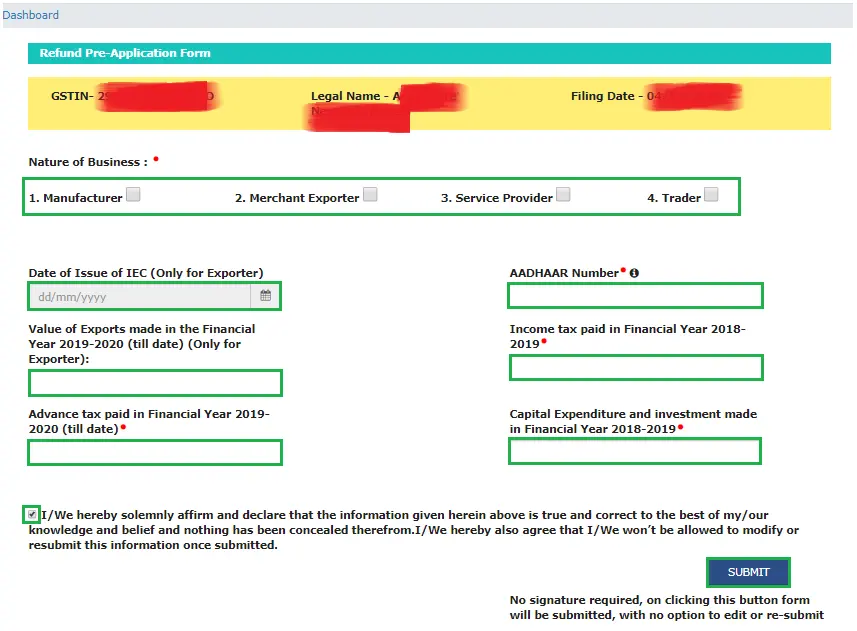
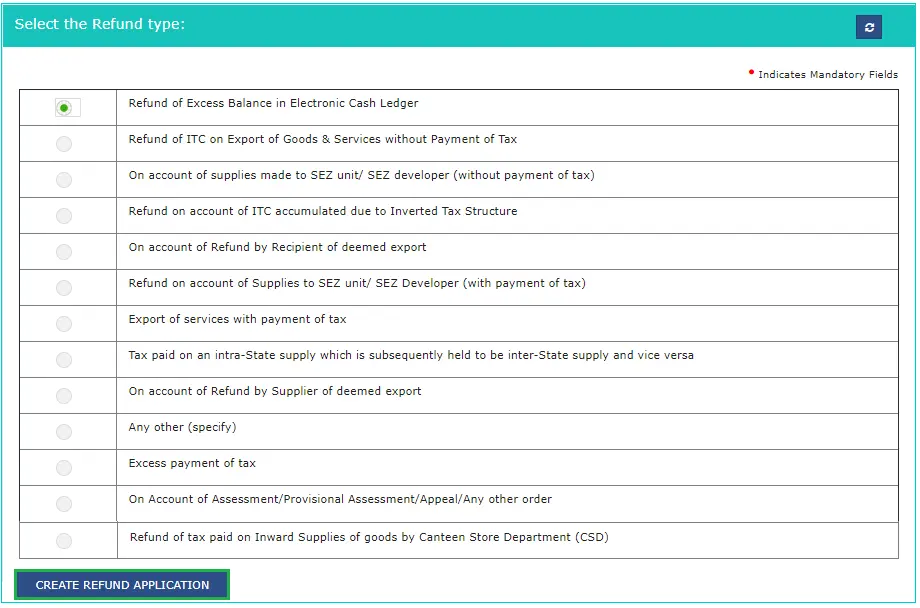
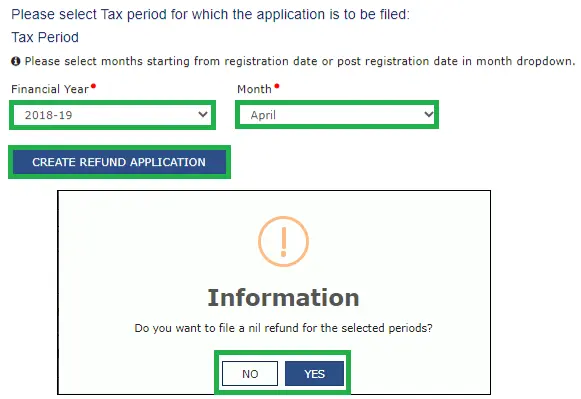
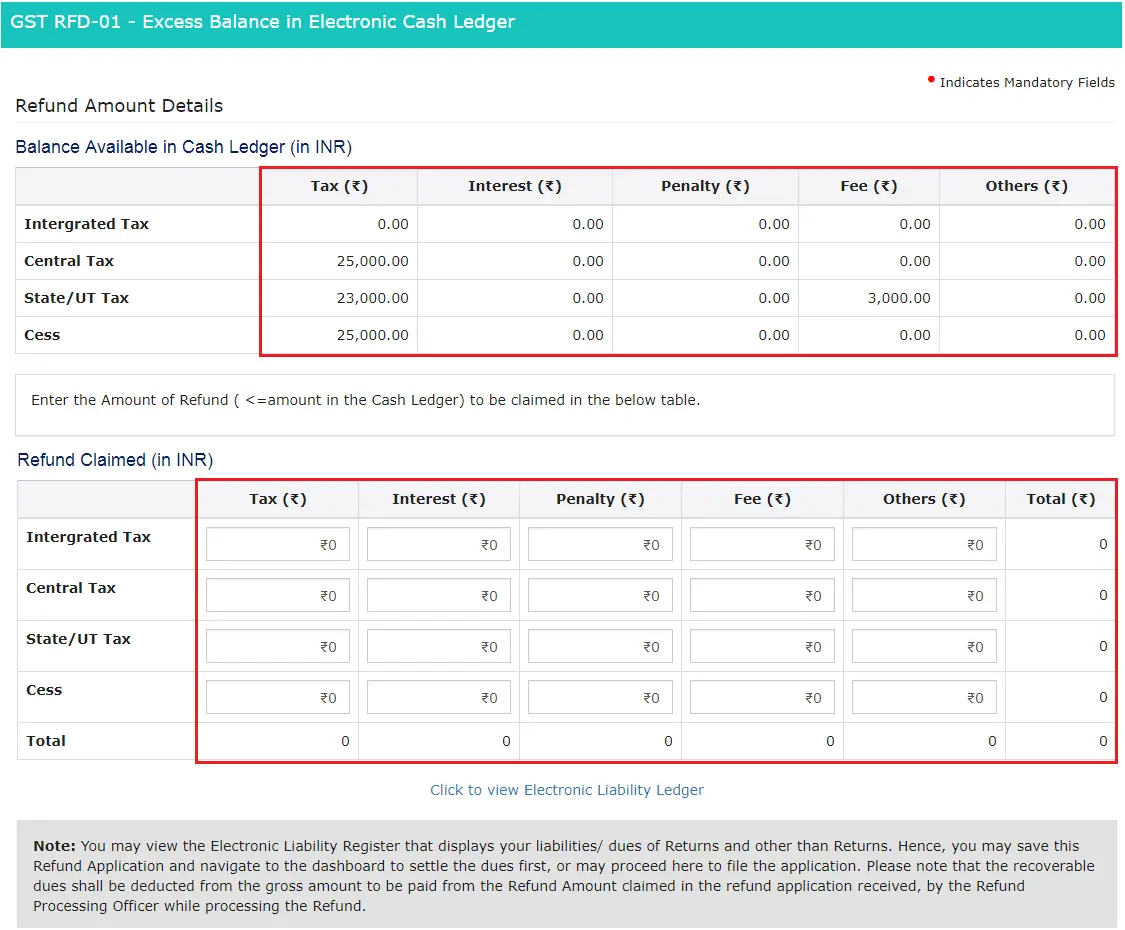
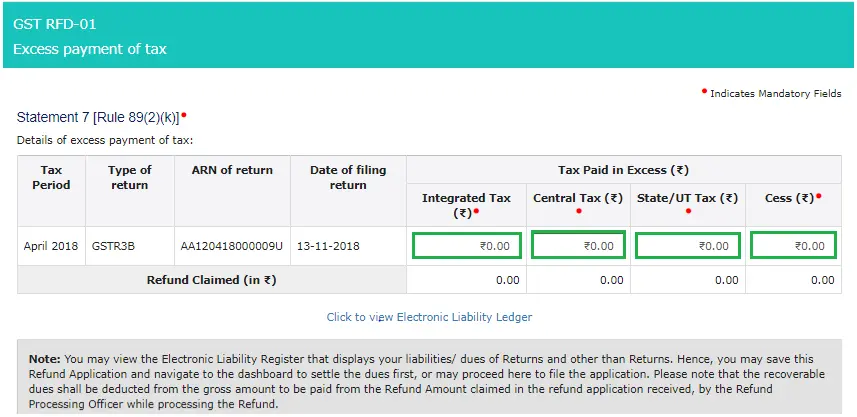
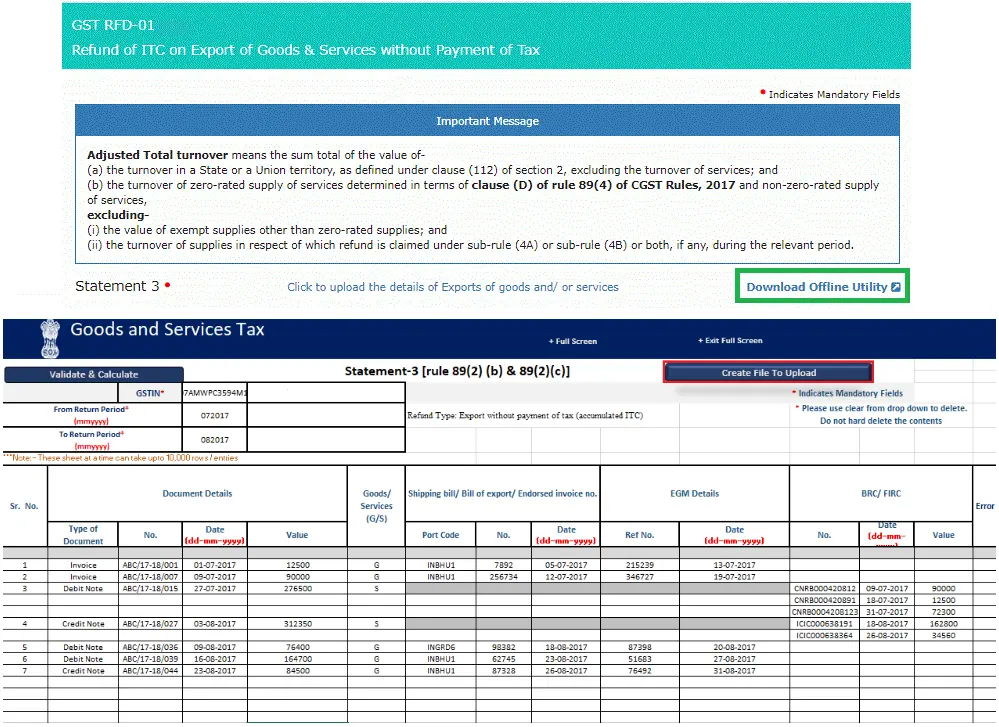
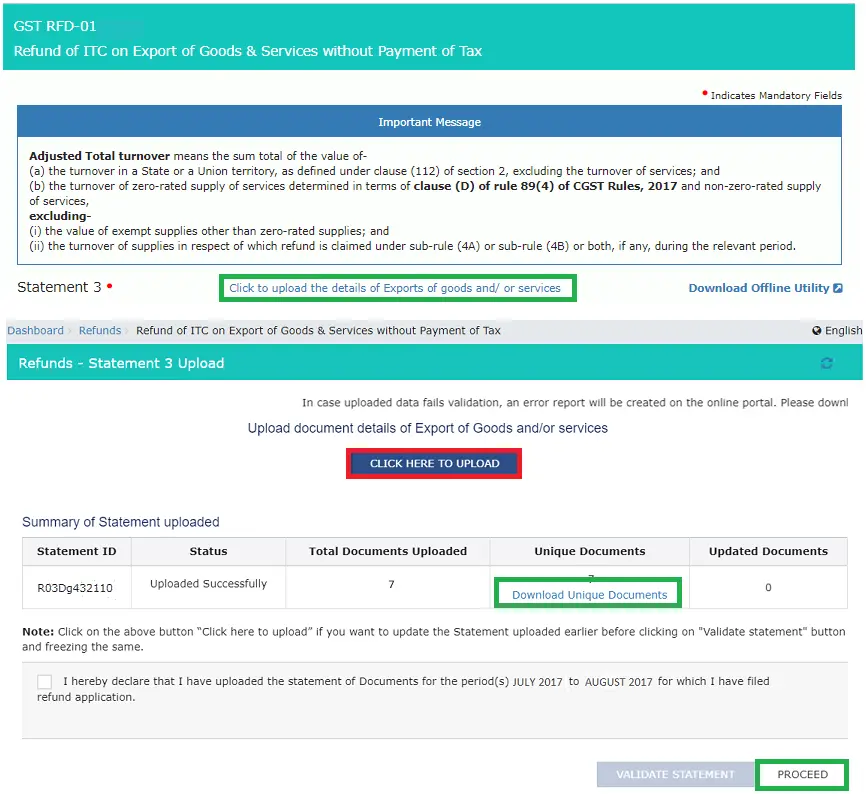
![Computation of Refund to be claimed Statement-3A [rule 89(4)] Computation of Refund to be claimed Statement-3A [rule 89(4)]](https://vakilsearch.com/blog/wp-content/uploads/2024/08/Computation-of-Refund-to-be-claimed-Statement-3A-rule-894.webp)
